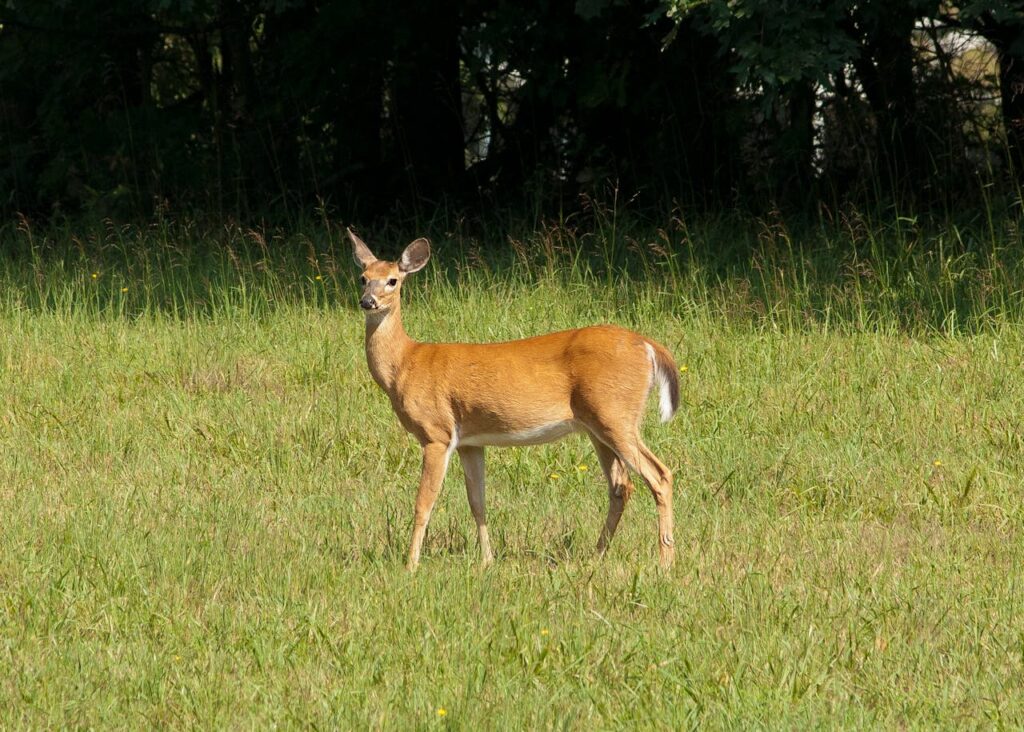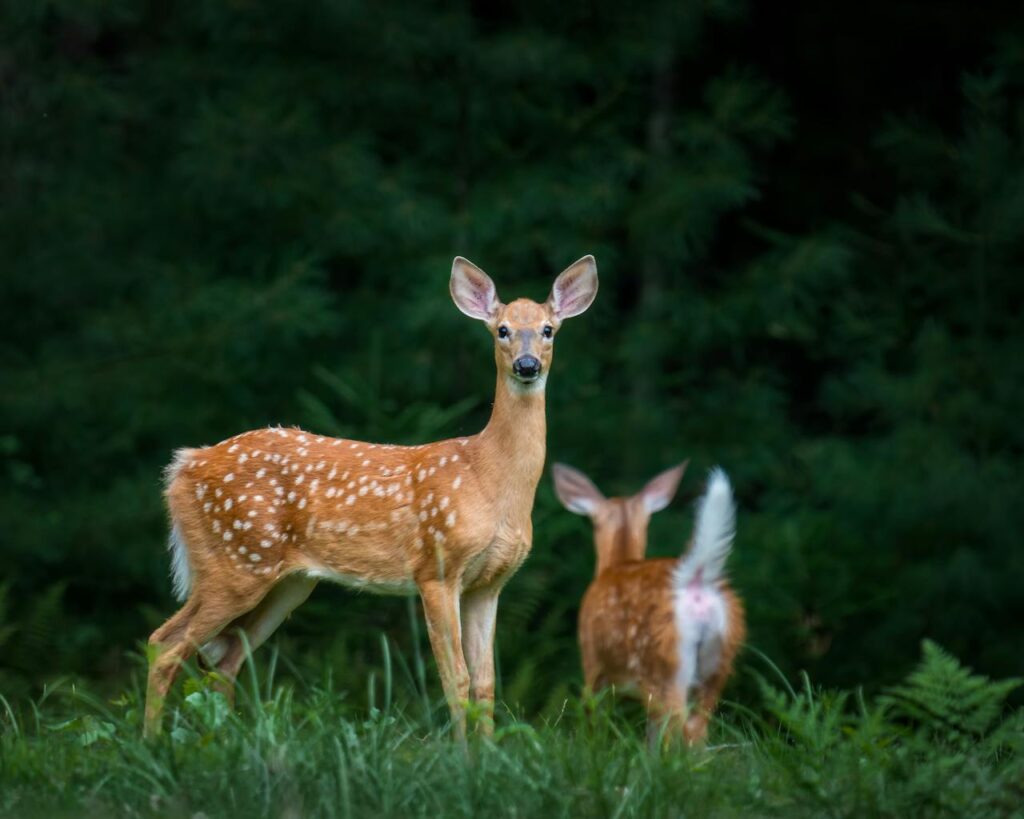Meet New Hampshire’s State Animal: The White-Tailed Deer
Drive through the forested backroads of New Hampshire at dusk, and you might spot a graceful creature with a signature tufted tail bounding across your path. That animal, glancing back with alert, shimmering eyes, is the white-tailed deer (Odocoileus virginianus), the official state animal of New Hampshire since 1983.
While this woodland native is common across much of North America, in the Granite State, the white-tailed deer holds more than just ecological significance. It represents resilience, natural beauty, and the deep-rooted relationship between New Hampshire’s people and its wild places.
In this comprehensive guide, we’ll explore everything you need to know about New Hampshire’s state animal, from its natural history and cultural value to conservation efforts and how climate change could shape its future.
Why the White-Tailed Deer Was Chosen as the State Animal
New Hampshire designated the white-tailed deer as its official state animal in 1983 following a grassroots movement by elementary school students. Young naturalists throughout the state submitted their votes and ideas, emphasizing the white-tailed deer’s importance to New Hampshire’s ecosystems, economy, and traditions like hunting and wildlife observation.
The deer’s adaptability, elegance, and presence in nearly every corner of the state made it an ideal symbol of New Hampshire’s natural heritage. The state legislature agreed, and the white-tailed deer was formally recognized through House Bill 473.
White-Tailed Deer Basics: Anatomy and Identification
The white-tailed deer gets its name from its most recognizable feature: the bright white underside of its tail, which it raises like a flag when alarmed. This serves as both a warning signal to other deer and a distraction for predators. But there’s much more to this animal than just its tail.
- Size: Adult males (bucks) weigh between 150-300 pounds, while females (does) range from 90–200 pounds.
- Coloration: Reddish-brown in summer; grayish-brown in winter for seasonal camouflage.
- Antlers: Only bucks have antlers, which are shed and regrown annually. Antler points are not a direct age indicator, but they often correlate with maturity and nutrition.
- Lifespan: Around 4 to 5 years in the wild, though some may live longer with optimal conditions.
Diet and Behavior
White-tailed deer are herbivores with a varied diet that shifts based on seasonal availability. They feed on:
- Grasses, legumes, and wildflowers in spring and summer
- Acorns, nuts, fruits, and agricultural crops in the fall
- Twigs, buds, and bark in winter
They’re crepuscular — most active during the early morning and late evening hours. This helps them avoid midday heat and predators.
A Social Species
Deer are highly adaptive and social animals. Females usually travel in familial groups with their fawns, while bucks are generally solitary outside the mating season (“rut”) in late autumn.
Ecological Importance of the White-Tailed Deer in New Hampshire
White-tailed deer occupy a vital ecological niche in New Hampshire’s hardwood forests, meadows, and wetlands. However, they also illustrate how too much of one species can throw an ecosystem out of balance.
Positive Roles:
- Provide food for predators like coyotes, bobcats, and black bears.
- Help disperse seeds from the vegetation they consume.
- Contribute to nutrient cycling through their waste.
Challenges of Overpopulation:
In areas where natural predators are scarce or hunting pressure is low, deer populations can surge, leading to:
- Overbrowsing: Native plants, tree saplings, and understory vegetation are depleted, affecting forest regeneration.
- Increased vehicle collisions: Deer-vehicle crashes are dangerous and costly. New Hampshire sees hundreds of these incidents annually.
- Disease transmission: High densities can lead to the spread of diseases like chronic wasting disease (CWD), though CWD has not yet been detected in New Hampshire as of 2024.
Historical and Cultural Significance
Long before the white-tailed deer was declared the state animal, it played a central role in the lives of New Hampshire’s Indigenous peoples. Native American tribes such as the Abenaki hunted deer for sustenance and materials. Every part of the animal was used, meat for food, hides for clothing, sinew for string and bindings, and bones for tools. The deer also appears in tribal folklore as a symbol of agility, grace, and survival.
European settlers continued this dependence, and hunting deer became a vital part of rural New Hampshire life for centuries. Today, the annual deer hunting season remains deeply embedded in the state’s recreational and cultural fabric.
In modern times, the white-tailed deer also features in local literature, nature photography, and environmental education. For many schools and conservation centers, it serves as a charismatic representative of New Hampshire’s wildlife.
Where You’ll Find the White-Tailed Deer in New Hampshire
White-tailed deer are incredibly adaptive and can live in diverse environments, but in New Hampshire, they prefer:
- Mature forests: Especially mixed hardwood-conifer forests that provide both cover and browse.
- Meadows and field edges: These areas offer plentiful food sources with visibility against predators.
- Wetlands and riverbanks: Water sources and dense thickets offer protective habitat for bedding.
Some of the best places to observe deer in the wild include:
- Bear Brook State Park
- White Mountain National Forest
- State wildlife management areas maintained by the NH Fish and Game Department
Conservation and Management Efforts in 2024
The New Hampshire Fish and Game Department plays a key role in managing the state’s white-tailed deer population. Rather than preservation alone, their approach is wildlife management, maintaining balanced populations based on habitat, public safety, and hunting interests.
| Conservation Focus | Description |
|---|---|
| Population Monitoring | Annual aerial surveys, harvest reports, and biological sampling |
| Hunting Regulations | Season limits, zone-specific rules, and hunter education programs |
| Habitat Enhancement | Promoting food plots and forest health through controlled burns and logging |
| Public Outreach | Workshops on deer ecology and ethical wildlife watching |
As of 2024, the estimated deer population in New Hampshire is approximately 100,000 to 120,000, according to the NH Fish and Game Wildlife Division. This is considered healthy and stable, though local fluctuations occur based on winter severity and development.
The Impact of Climate Change and Urban Sprawl
Two primary stressors may shape the future of white-tailed deer in New Hampshire.
1. Milder Winters
Warmer winters caused by climate change reduce natural mortality caused by deep snow, which usually slows down deer movement and limits access to food. As a result, more fawns survive, leading to dense local populations. While good for deer in the short term, it can create the ripple effects of overpopulation mentioned earlier.
2. Habitat Fragmentation
As suburban developments expand into rural areas, deer lose forest habitats and are forced into smaller patches of land. Ironically, they seem to thrive in this “edge habitat,” meaning they’ll venture into neighborhoods and roads, increasing risk of collisions and human-wildlife conflicts.
Fun Facts About New Hampshire’s State Animal
- Fawns are born with white spots to help them blend into the forest floor.
- Deer have a highly developed sense of smell, up to 500 times stronger than humans!
- Their legs are designed to propel them up to 30 mph in a sprint and leap over 10 feet high.
- Just like fingerprints, a deer’s antler pattern is unique to the individual.
People are also curious about:
Are white-tailed deer endangered in New Hampshire?
No, white-tailed deer are not endangered. Their populations are stable and well-managed by the state. In fact, overabundance is a more pressing concern in some areas.
When is the best time to see deer in New Hampshire?
Early morning and late evening in the spring and fall are ideal for deer watching, especially in forest edges and open meadows. Fall also coincides with the rut, when bucks are most active.
What do white-tailed deer eat during the winter?
In snow-covered months, deer eat woody browse like twigs from maple, birch, and hemlock trees, as well as evergreen needles and any remaining acorns or apples. They may also visit residential areas in search of birdseed or ornamental plants.
The White-Tailed Deer: More Than Just a Symbol
New Hampshire’s state animal is more than a list of traits or a silhouette on a welcome sign. The humble white-tailed deer represents the shared wildness tucked into the folds of the state’s hills and forests, something familiar yet elusive, ordinary yet revered. From schoolchildren’s votes to centuries of tradition, this animal continues to shape and reflect New Hampshire’s spirit.
Whether you spot one on a foggy morning hike or hear its startled step in the woods, remember: in a state of granite cliffs and quiet lakes, the white-tailed deer continues to link people, place, and nature in profound ways.



